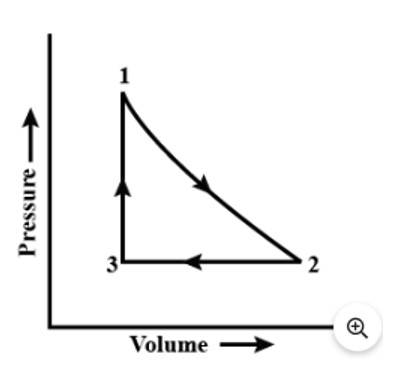Ncert Solutions Chemistry Class 11th
Get insights from 2k questions on Ncert Solutions Chemistry Class 11th, answered by students, alumni, and experts. You may also ask and answer any question you like about Ncert Solutions Chemistry Class 11th
Follow Ask QuestionQuestions
Discussions
Active Users
Followers
New answer posted
5 months agoContributor-Level 10
This is a Short Answer Type Questions as classified in NCERT Exemplar
Gibbs energy for a reaction in which all reactants and products are in standard state. ΔrG° is related to the equilibrium constant of the reaction as follows
ΔrG = ArG° + RT In K
At equilibrium, 0 = ΔrG° + RT InA– ( {ΔrG = 0) or ΔrG° =-RT lnK
ΔrG° = 0 when K= 1
For all other values of K, ArG° will be non-zero.
New question posted
5 months agoNew answer posted
5 months agoContributor-Level 10
This is a Short Answer Type Questions as classified in NCERT Exemplar
Molar enthalpy of vaporization is more for water due to hydrogen bonding between water molecules.
New answer posted
5 months agoContributor-Level 10
This is a Short Answer Type Questions as classified in NCERT Exemplar
State functions: Enthalpy, entropy, temperature, free energy Path functions: Heat, work.
New answer posted
5 months agoContributor-Level 10
This is a Short Answer Type Questions as classified in NCERT Exemplar
The standard molar entropy of H20 (1) is 70 J K-1 mol-1. The solid form of H20 is ice. In ice, molecules of H20 are less random than in liquid water. Thus, molar entropy of H20 (s) < molar entropy of H20 (1). The standard molar entropy of H20 (s) is less than 70 J K-1 mol-1.
New answer posted
5 months agoContributor-Level 10
This is a Short Answer Type Questions as classified in NCERT Exemplar
During cyclic process, change in internal energy is zero.
ΔU = 0
and no work is said to be done, as system returns to the initial state.
For a steady state cyclic process at any given stage enthalpy is one single value however, at different stage it would vary.
ΔH = 0
New answer posted
5 months agoContributor-Level 10
This is a Short Answer Type Questions as classified in NCERT Exemplar
ΔrG° = -RT ln Kp
= -RT ln (0.98)
Since In (0.98) is negative
.'. ΔrG° is positive the reaction is non spontaneous
New answer posted
5 months agoContributor-Level 10
This is a Short Answer Type Questions as classified in NCERT Exemplar
Yes, when the system and the surroundings are in thermal equilibrium, their temperatures are the same.
New answer posted
5 months agoContributor-Level 10
This is a Short Answer Type Questions as classified in NCERT Exemplar
Heat has a randomising influence on a system and temperature is the measure of average chaotic motion of particles in the system. The mathematical relation which relates these three parameters is? S = qrev/ T
Here? S = change in entropy ^
qrcv = heat of reversible reaction '
T = temperature
New answer posted
5 months agoContributor-Level 10
This is a Short Answer Type Questions as classified in NCERT Exemplar
It is a spontaneous process. Although enthalpy change is zero, randomness or disorder (ΔS) increases and ΔS is positive. Therefore, in the equation, ΔG = ΔH – TΔS, the term TΔS will be negative. Hence ΔG will be negative.
Taking an Exam? Selecting a College?
Get authentic answers from experts, students and alumni that you won't find anywhere else
Sign Up on ShikshaOn Shiksha, get access to
- 65k Colleges
- 1.2k Exams
- 679k Reviews
- 1800k Answers

